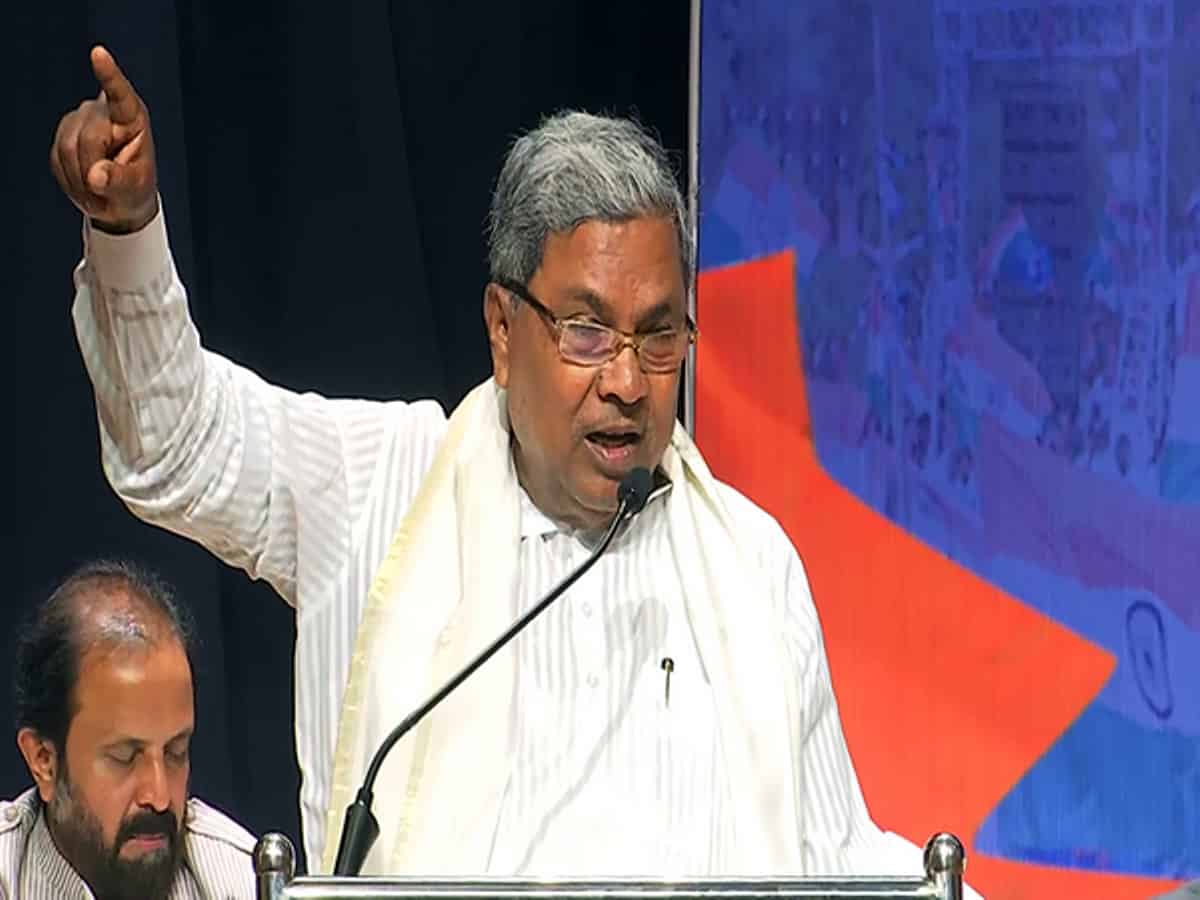
Bengaluru: Karnataka Chief Minister Siddaramaiah has written to the union government to review the current parameters for a state to declare drought and consider amending it, to establish a more responsive framework that acknowledges the realities of each state and offers timely assistance to the farmers in particular.
In the backdrop of deficient Southwest Monsoon rains received in Karnataka, the chief minister has written Union Agriculture Minister Narendra Singh Tomar, concerning the “stringent” parameters prescribed in the ‘Manual for Drought Management-2016’, as updated in 2020 for the declaration of drought by state governments.
“In the current Southwest Monsoon season, Karnataka has recorded 234 mm as against a normal rainfall of 336 mm, with 34 percent deficiency. This was also in the backdrop of delayed arrival of the monsoon and a deficit of 56 percent in June due to weak monsoon,” Siddaramaiah said, adding that throughout this season, the rainfall distribution and intensity has been erratic.
“Despite drought-like conditions in several taluks, we have not been able to meet the existing parameters for declaring drought, which is leaving our farmers without critical support such as input subsidy required in the event of failure to commence sowing operations /mid-season crop failure after sowing due to weak rains apart from other drought management/mitigation measures as set out in the manual,” he said.
“While it is understandable that the norms for drought declaration are established to ensure accurate assessments and appropriate allocation of resources, it is essential to recognise that each state and the regions within the state have their unique challenges and requirements,” Siddaramaiah said.
He said it is crucial to re-evaluate the current parameters for drought declaration to accurately respond to the “dire situation” arising due to erratic weather conditions propelled by climate change and its adverse impact on farmers and the agricultural sector.
“The current situation demands a more flexible approach to the existing norms, taking into account the long-term implications of prolonged water scarcity on agriculture and the livelihoods of farmers,” he said.
Noting that the last few years have witnessed unprecedented challenges and adverse weather conditions — mainly driven by climate change — affecting various aspects of life, he said the increasing frequency and intensity of droughts have had severe consequences, including crop failures, water scarcity, and socio-economic hardships for rural communities.
Further highlighting that while the existing drought declaration parameters as set out in the revised drought manual have served as important guidelines for assessing and responding to drought situations, the CM said, they may need to be revised to reflect the diverse 14 agro-climatic zones in the State, each facing distinct challenges.
The current one-size fits-all approach to drought declaration is not capturing the nuances and variations in different regions, he said. It is important to develop region-specific criteria that consider local ecological factors, water availability, and agricultural practices, he added.
A few key considerations that the CM has as suggested in his letter include: Rainfall Deviation index ranging from -20% to -59% may be considered as mandatory trigger for drought declaration, and lower than two weeks consecutive dry spell should be considered under rainfall related indices instead of 3-4 weeks.
He also said that the early declaration of drought has been made difficult due to the condition imposed in the manual that sowing has to be completed and a declaration has to been given by state governments stating that “no further sowing is expected” in regions affected by drought. This is contrary to the input subsidy concept of immediate relief and restart of economic activity, and prevents the state government from undertaking immediate relief and mitigation, he added.



